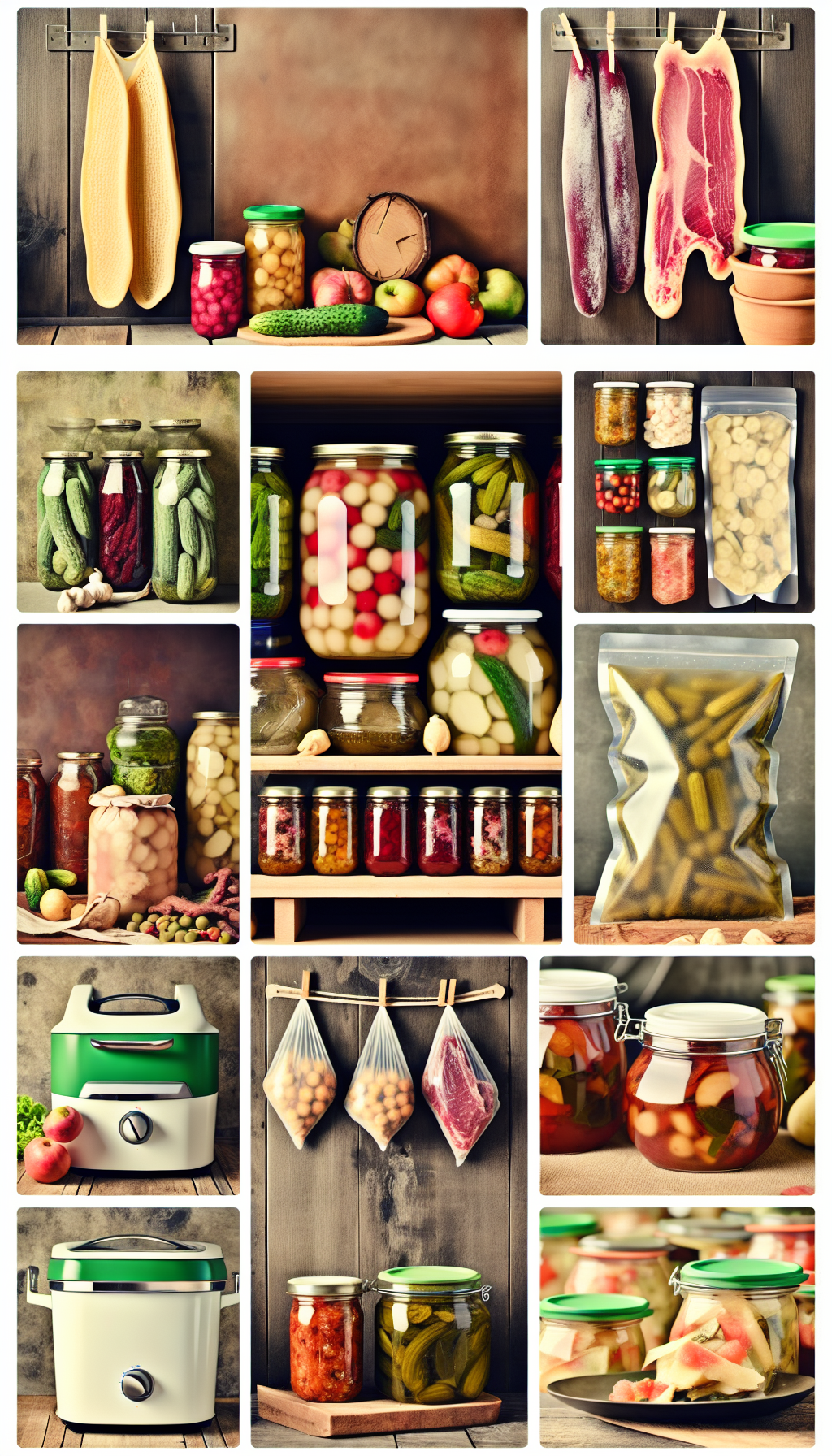
Welcome to an article exploring the best methods to preserve food for the long term! With the cost of groceries on the rise and a renewed interest in self-sufficiency, many are looking for ways to make their food last longer. Whether you’re a seasoned prepper or a beginner looking to cut down on waste, we’ll discuss various techniques such as canning, freezing, dehydrating, and pickling that can help you stock up on food that will stay fresh for months or even years to come. Let’s dive in and learn how to make your food supply last! What Are The Best Ways To Preserve Food Long-term?
Hey there! Have you ever found yourself with more food than you can eat before it goes bad? Or maybe you want to stock up on essentials without worrying about them spoiling. In this article, we’ll explore the best ways to help you preserve your food long-term so you can save time, money, and reduce waste.
Benefits of Preserving Food Long-term
Preserving your food long-term offers a myriad of benefits. Not only does it help you save money by reducing food waste, but it also allows you to enjoy your favorite produce even when it’s out of season. Additionally, preserving food can help you be more self-sufficient and prepared for unexpected emergencies. By learning different preservation methods, you can ensure your food stays fresh and tasty for longer periods.
Canning
Canning is a popular method of food preservation that involves sealing food in jars or cans to prevent contamination from microorganisms. The process usually involves boiling the jars in hot water to kill any bacteria and create an airtight seal. Fruits, vegetables, jams, and pickles are commonly preserved using this method. Canned foods can last for up to one year or more when stored in a cool, dark place.
Freezing
Freezing is a simple and convenient way to preserve a wide variety of foods. By freezing food, you can effectively slow down the growth of bacteria and enzymes that cause spoilage. Most fruits, vegetables, meats, and prepared dishes can be frozen for extended periods. To ensure the best quality, make sure to package your food properly to prevent freezer burn. Freezing can extend the shelf life of food for several months to over a year.
Drying
Drying is one of the oldest methods of food preservation that involves removing moisture from food to prevent microbial growth. Fruits, vegetables, herbs, and meats can be dried using various techniques such as sun drying, oven drying, or using a food dehydrator. Dried foods are lightweight, require minimal storage space, and are perfect for snacking or incorporating into recipes. When stored in airtight containers, dried foods can last for several months to a year.
Pickling
Pickling is a process that involves immersing food in a brine solution made of vinegar, water, salt, and spices. This method creates an acidic environment that inhibits the growth of harmful bacteria and preserves the food. Common pickled items include cucumbers (pickles), beets, peppers, and eggs. Pickled foods have a tangy flavor and can be stored in the refrigerator for several months or preserved using a hot water bath canning method for long-term storage.
Fermentation
Fermentation is a preservation technique that involves the conversion of sugars into alcohol, acids, or gases by bacteria or yeasts. Foods like sauerkraut, kimchi, yogurt, and kombucha are created through the fermentation process. Fermented foods are rich in probiotics and have a tangy, sour flavor. When stored in the refrigerator, fermented foods can last for several months to a year.
Root Cellaring
Root cellaring is a traditional method of storing fruits, vegetables, and root crops in a cool, dark, and humid environment. A root cellar provides natural insulation and helps regulate temperature and humidity levels to slow down the ripening process and prevent spoilage. Common items stored in a root cellar include potatoes, carrots, onions, and apples. Properly stored produce can last for several months or even throughout the winter season.
Vacuum Sealing
Vacuum sealing is a modern method of preserving food that involves removing air from a package to create an airtight seal. By eliminating oxygen, vacuum sealing helps prevent oxidation, freezer burn, and bacterial growth, which can extend the shelf life of food. Vacuum sealers are commonly used for meats, fish, nuts, and dried goods. When stored in a cool, dry place, vacuum-sealed foods can last for several months to a year.
Salting
Salting, or curing, is a preservation method that involves using salt to draw out moisture from food and inhibit the growth of bacteria. Meats, fish, and certain fruits and vegetables can be salted to create flavorful and long-lasting products. The process of salting can involve dry curing, brining, or packing food in salt. Salted foods like bacon, ham, and olives can be stored in a cool, dry place for several months or longer.
Conclusion
Preserving food long-term is a practical way to make the most of your food resources and reduce waste. Whether you choose to can, freeze, dry, pickle, ferment, root cellar, vacuum seal, salt, or use a combination of methods, there are plenty of options available to help you enjoy fresh, delicious food year-round. By experimenting with different preservation techniques and finding what works best for you, you can stock up on your favorite foods and enjoy them whenever you please. So, roll up your sleeves, get creative in the kitchen, and start preserving your food for a tasty and sustainable future!
